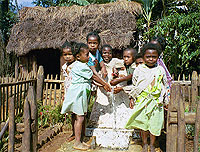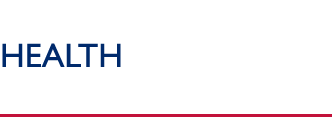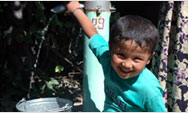Safe Water Key to Safe Health
 |
 |
 |
| |
Children stand around a clean water fountain. |
|
Contaminated water, unsanitary living conditions, water shortages, and consequent poor hygiene kill two million children each year and place an enormous burden on the health and nutritional status, health systems, economic growth, and environment of developing countries.
With water supply and sanitation on the international policy agenda and new commitments made as part of the Millennium Development Goals (MDG), and at the World Summit on Sustainable Development last year in Johannesburg, the international donor community is making a concerted effort to increase access to these basic public health interventions.
The Millennium Development Goals will strive to cut by half the number of people without access to clean drinking water and adequate sanitation by 2015.
USAID is a significant donor in this effort, with obligations during the current fiscal year expected to total more than $250 million.
Along with the U.S. Centers for Disease Control and Prevention (CDC) and other, USAID has helped develop a health intervention aimed at improving the handling of water at the household level. The Safe Water System, which promotes household disinfection with chlorine, the use of a safe storage container with a narrow mouth to prevent contamination by hands or utensils, and hygiene education, has been implemented at large scale in Zambia and Madagascar. USAID is working with CDC and other partners to further refine this program approach and, where appropriate and possible, take it to scale in other countries.
In Zambia, rain waters crops and brings respite from the dry season, but it also causes flooding and bursts pipes, mixing piped water and sewage together. People are left to find water elsewhere, and diarrhea, cholera, and other water-borne disease outbreaks follow. As part of the Safe Water System, USAID's partner in Zambia, Population Services International (PSI), has trained 700 health workers, neighborhood volunteers, and pharmacy and drugstore owners in diarrhea prevention.
Alan Reed, former USAID mission director in Zambia, said, "Once Zambians realize their benefits, safe water systems could prove to be one of the most important health interventions of the decade."
While commitment and political will to improve water and sanitation have increased, resources at the country level have not followed suit. Some developing nations have made advances in the provision of safe water and sanitation, however, many continue to expect the private sector to address gaps or problems.
According to USAID Senior Environmental Health Advisor John Borrazzo, Ph.D, collaboration is needed in order to reach the Millennium Development Goals.
"Clearly, we will not be able to meet the goals just by looking for investment from any single entity to make it happen," he said. "Partnerships among local and national governments, international organizations, large corporations, non-governmental organizations, and local entrepreneurs will be key to improvements in clean water and sanitation."
Borrazzo emphasized the importance of improving water access and sanitation. "If the [goals] are not met, we can imagine big catastrophes."
|


